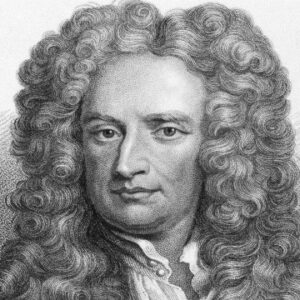Pierre-Simon Laplace was a French mathematician and astronomer who is known as the “French Newton” for his groundbreaking studies on the stability of the solar system. He also made groundbreaking contributions to probability and statistics theory, which influenced a new generation of mathematicians. Born into a poor family, his education was paid for by neighbors, and at the age of 16, he was sent to study theology. However, he quickly developed a strong interest in mathematics and was drawn to physics and astronomy as a result. He was a mathematics professor for seven years and also published several scientific papers during that time. By applying Sir Isaac Newton’s theory of gravitation to the solar system, Laplace was able to account for all of the observed deviations of the planets from their theoretical orbits, and he developed a conceptual view of evolutionary change in the solar system’s structure. He also showed how to use probability to interpret scientific data and used his own definition of probability to justify the basic mathematical manipulations. He reaffirmed and expanded on the nebular hypothesis of the solar system’s origin, as well as the existence of black holes and the concept of gravitational collapse.
Childhood and Adolescence
Pierre-Simon Laplace was born in Beaumont-en-Auge, a village in Normandy, France, on March 23, 1749, to Pierre de Laplace, a Maarquis farmer, and his wife, Marie-Anne Sochon.
Despite his family’s financial difficulties, Laplace was able to receive a good education thanks to the generosity of his wealthy neighbors. At the age of 16, his father sent him to Caen University to study theology in order for him to be ordained in the Roman Catholic Church. Laplace, on the other hand, developed a strong interest in mathematics.
He dropped out of college at the age of 19 and moved to Paris, where he worked as a mathematics professor at the École Militaire from 1769 to 1776. During this time, he published a number of papers on integral calculus, mechanics, and physical astronomy, earning him widespread acclaim throughout France.
Career of Laplace
His early published work, which began in 1771, concentrated on differential equations and finite differences. He began to consider the mathematical and philosophical concepts of probability and statistics as a result.
His ‘Mémoire sur la probabilité des causes par les événements’ was published in 1774. He published another paper two years later that expanded on his statistical thinking and began his systematic work on celestial mechanics and solar system stability.
He worked on the subject of spherical attraction from 1784 to 1787, laying the mathematical groundwork for the scientific study of heat, magnetism, and electricity.
He published ‘Exposition du système du monde (The System of the World)’ in 1796, which contained his ‘nebular hypothesis.’
He published five volumes of ‘Traité de mécanique céleste (Celestial Mechanics)’ between 1799 and 1825, which summarized the results of his mathematical development and application of the law of gravitation.
His comprehensive mathematical research, titled ‘Théorie analytique des probabilités (Analytic Theory of Probability),’ was published in 1812. In 1814, another major work on probability theory was published, titled ‘Essai philosophique sur les probabilités (A Philosophical Essay on Probability).’
He proposed the existence of black holes, speculating that massive stars could exist with such strong gravity that not even light could escape from their surface. He also stated that the sound speed in air is determined by the heat capacity ratio.
Laplace’s method for approximating integrals, solution of the linear partial differential equation of the second order, and general proof of the Lagrange reversion theorem are among his other contributions to pure and applied mathematics.
Major Projects of Laplace
Pierre-Simon Laplace is known for his influential five-volume treatise ‘Traité de mécanique céleste’ (Celestial mechanics; 1799-1825), which established a strong mathematical understanding of heavenly body motion. He demonstrated that small perturbations in the orbital motion of planets will always be small, constant, and self-correcting.
He developed Laplace’s equation and the Laplace transform, which can be found in many branches of mathematics. He is also the creator of the Laplacian differential operator, which is widely used in mathematics.
Achievements & Awards
Laplace was elected to the Royal Swedish Academy of Sciences as a foreign member in 1806. In 1822, he was inducted into the American Academy of Arts and Sciences as a Foreign Honorary Membe
Personal History and Legacy
He married Marie-Charlotte de Courty de Romanges, a Besançon girl twenty years his junior, in March 1788. Charles-Émile was the couple’s son, and Sophie-Suzanne was their daughter.
At the age of 77, Pierre-Simon Laplace died on March 5, 1827, in Paris, France. His physician, François Magendie, removed Laplace’s brain after he died, and it was later displayed in a roving anatomical museum in the United Kingdom.
Estimated Net Worth
The estimated net worth of Laplace is unknown.


